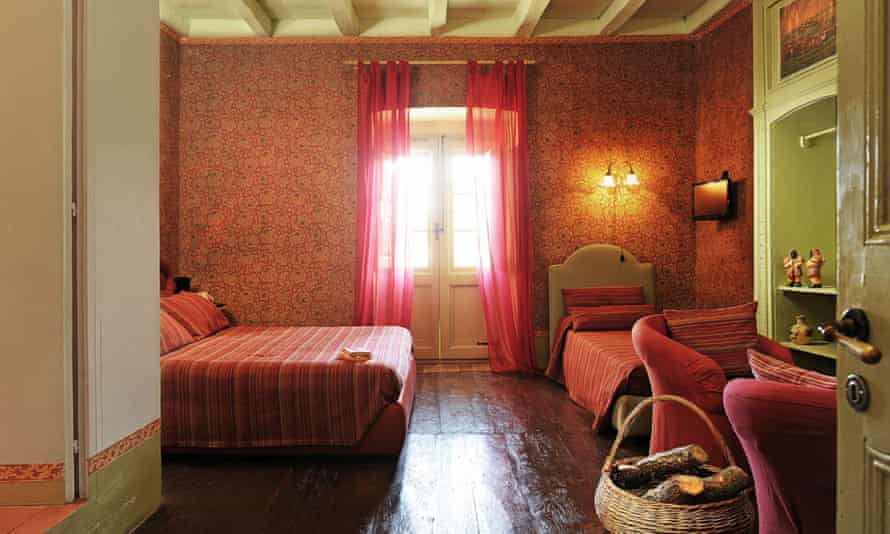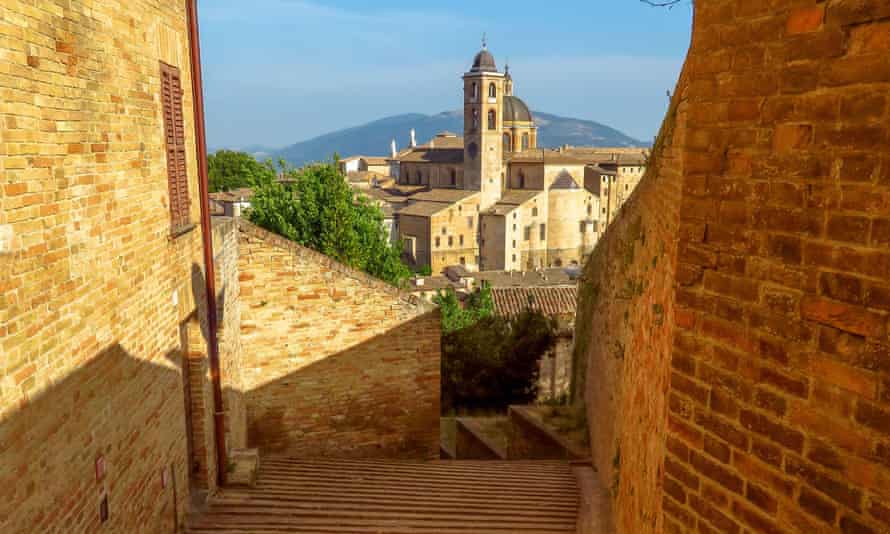Hidden Italy: where to stay and what to do off the beaten track | Italy holidays
It’s now more than two years since Italy was the first western country to declare a nationwide lockdown. After travel started again, some Italophiles were surprised to find a country with a very un-British attitude to queues and personal space suddenly distant and obedient. Even now there is noticeably less kissing and hugging in streets and squares.
But everything else that makes Italy such a favourite – food, wine, history, art, landscapes and people – is still there to be savoured, and all the more rewarding off the beaten tourist track.
Oristano and the Sinis, Sardinia
Halfway up the island’s west coast, Oristano province has been much less affected by tourism than Alghero or Cagliari. Yet it boasts an elegant, historic capital, dramatic landscapes in the Monte Arci national park and unspoilt, unusual beaches on the Sinis peninsula.
Oristano town has a baroque cathedral, the island’s biggest, and an archaeology museum – but the chief pleasure is strolling the pedestrianised pink- and cream-painted streets between Piazza Roma, with its 13th-century defence tower, and Piazza Eleonora, named after an early feminist and ecowarrior, Eleonora d’Arborea. (A rare female judge in the 14th century, she made landmark rulings on rape, women’s rights and wildlife protection that stood for 400 years, until superseded in 1827.)
To its west – beyond the Cabras lagoon, which is home to 800 nesting flamingoes and the source of some of the world’s best bottarga (cured fish roe) – the Sinis peninsula is flat and rural, with myriad beaches, from Is Arenas in the north to San Giovanni di Sinis in the south. The latter is an arc of fine sand backed by low cliffs close to the ruins of Tharros (open daily, April-October), a Phoenician-Roman port abandoned in 1070 in the face of repeated pirate attacks. The most striking beach is Is Arutas, further north: glistening between ochre rocks, its “sand” is actually tiny white quartz pebbles, resembling risotto rice. The peninsula is perfect for cycling: bikes can be hired from bikeor.it in Oristano, or from hotels and agriturismos.
A half-hour drive inland, Santu Lussurgiu is a 1,000-year-old village in the caldera of an extinct volcano. It’s hard not to be charmed by its Museum of Peasant Technology (Wed-Sun, €5) showing tools, toys and household implements from years gone by.

Where to stay
Minutes from Putzu Idu beach, in the northern Sinis, low-rise, modern Hotel Raffael (doubles from €75 B&B) has a pool and beautiful gardens. In Santu Lussurgiu, rooms and apartments at Antica Dimora del Gruccione (doubles from €90 B&B) are spread over four period buildings and its restaurant specialises in slow food. It hosts the Vulcani blues festival on three Sundays in August, and offers year-round lessons in pasta, cheese and bread-making (€30pp).
Urbino, Le Marche

Umbria became the new Tuscany decades ago, but the region next door, Le Marche, never quite gained that status, despite its beaches, rolling hills and medieval towns. The pearl of Le Marche is the walled Unesco-listed city of Urbino, one of the cradles of the Renaissance.
Its hilltop red-brick buildings can be seen from miles away, and the pedestrianised old town is all steep slopes and narrow alleys lined with 15th-century churches and palaces. The fact that Urbino is home to only 14,000 people adds to its charms, as does the presence of the Università di Urbino (one of Italy’s oldest) whose roaming groups of students stop the city feeling like an open-air museum.
Its exhibits are extraordinary, though: the Ducal Palace was built by the man responsible for much of Urbino’s glory, Federico da Montefeltro. A passionate patron of the arts, he spent 30 years creating what he hoped would be the most beautiful residence in Italy, with twin fairytale towers, arches and mullioned windows. It now houses the national art gallery, with works by Raphael (born in the city), Titian and Uccello. A painting the duke commissioned, entitled The Ideal City and attributed to Piero della Francesca, shows a pristine town square and baptistery in intricate detail, but with not a person in sight.
Thankfully, the real Urbino is less perfect and more enjoyable. Five minutes’ walk away, Raphael’s birthplace is a modest house that was also his father’s studio. Exhibits include a Madonna and child fresco that father and son may have painted together.
The duke, worried that steep narrow streets lent themselves to enemy ambushes, had a spiral staircase built within the city walls so he could climb to his palace on horseback. In these less dastardly times, visitors can climb the Rampa Elicoidale from Piazza Mercatale (where the bus stops) up to the palace and Raffaello theatre.

Not everything is ancient, though. Casa della Poesia opened in 2015 in…
Read More: Hidden Italy: where to stay and what to do off the beaten track | Italy holidays

